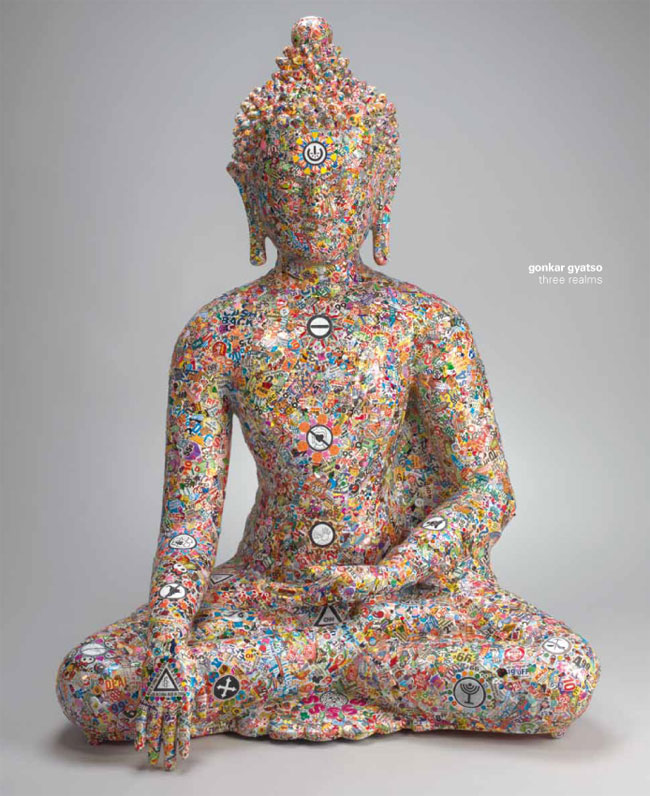Gonkar Gyatso, Shangri La, 2014
Yesterday, the New York Times featured Gonkar Gyatso in the article, Tibetan Artists Rise to the Fore. Mentioned are the artist's current Hong Kong solo exhibition at Pearl Lam Galleries, and his inclusion in the Metropolitan Museum of Art's, Tibet and India: Buddist Traditions and Transformations, which took place earlier this year.
The Tibetan artist Gonkar Gyatso was in Hong Kong last month, putting the final touches on his latest exhibition at Pearl Lam Galleries. A bookish figure in black glasses and a blue button-up shirt, he stopped to inspect one of his new works, a 10-foot by 10-foot collage that showed a construction crane hook holding up the concentric spheres of a mandala, a Tibetan spiritual symbol. Cartoon trucks and diggers surrounded the spheres, which were dripping and melting like the polar caps. The piece, called “Shangri La” (2014), is one of 16 in the show, which runs through Oct. 31… (click for full article)


